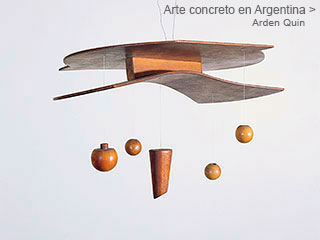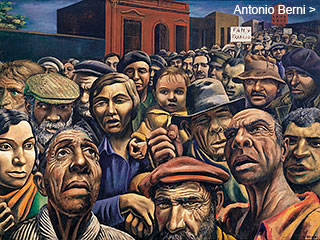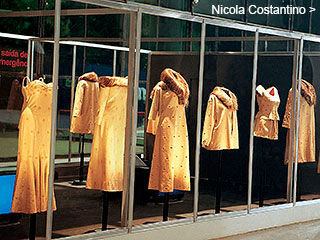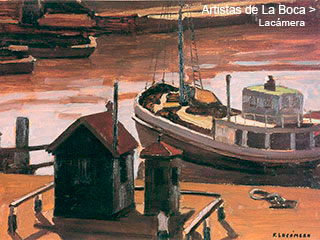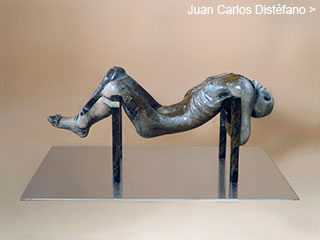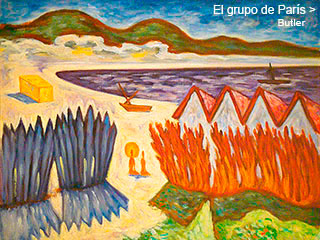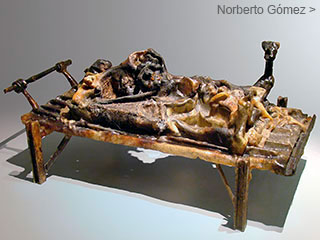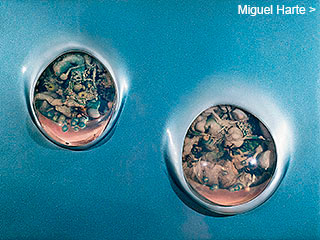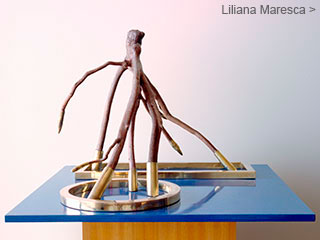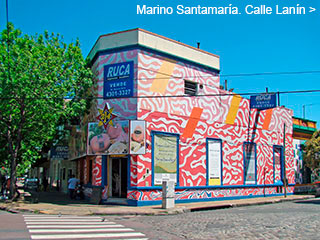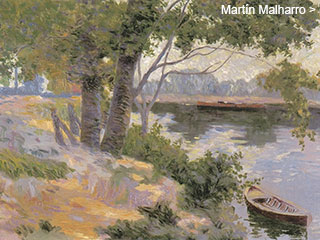Menú
Algunos dossiers
Ropa confeccionada con peletería humana, jabón fabricado con su propia grasa corporal y cañerías obstruidas con potrillos y terneros nonatos. Así se pueden describir algunas de las obras más características de Nicola Costantino, artista rosarina que muestra su producción en los circuitos internacionales más exigentes. Julio Sánchez recorre su vida y su obra.
Smadar Sheffi. “Boutique” en Ha Aretz – The Guide, Tel Aviv, 02/08/2002.
This excellent exhibition by Argentinean artist Nicola Costantino deals with the way we relate to tile body as an arena for political battles on the one hand, and on the other as something that undergoes change over time. It also careful look reveals that what seems to be an ostrich skin pattern is in fact embossed imprints made from direct casts of nipples or bodily orifices.
The discovery is shocking. The viewer is confronted with what purports to be human skin, an unbearable sight electric with terrible associations of barbarity and the Holocaust. Startling too is the conflict between desirable, high-end objects, ostensibly evidence of refined taste and a deep pocket, and the sudden trauma that they cause.
Costantino is part of a long artistic tradition. Using fake body parts within actual clothes as part of an art work characterized the Surrealist movement in the 1920s and '30s. Artists such as Man Ray, Salvador Dali and Meret Oppenheim, the poet Louis Argon, and Elsa Schiaparelli, the important couturier of the period, frequently used the key image of the store‑window mannequin, which served as a doppelganger for tile perfect woman and could be draped in all one's fantasies.
The clear message of the work, about empting the body of meaning, can be applied to the conventional areas of modeling and beauty contests: in the
continúa


